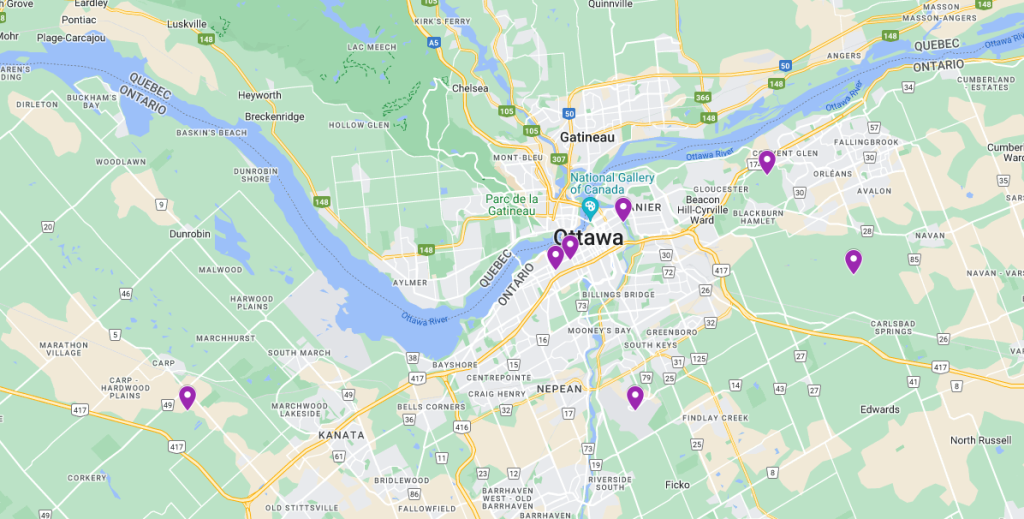CRTC expands ability for internet providers to sell service over telecoms’ networks

Posted Aug 13, 2024 09:53:08 AM.
Last Updated Aug 13, 2024 05:10:15 PM.
Canada’s telecommunications regulator is expanding a decision that allows smaller internet providers to use rivals’ fibre networks to offer their services to customers.
The CRTC announced that starting next February, large telephone companies that own fibre internet networks, such as Bell Canada, Telus Corp. and SaskTel, must give competitors access to their networks for a fee. The decision applies to networks nationwide.
It builds upon a CRTC ruling late last year that temporarily required Bell and Telus to provide competitors with access to their fibre-to-the-home networks only in Ontario and Quebec.
The CRTC’s previous decision, which took effect this May, was meant to stimulate competition for internet services in the provinces where the regulator said independent companies were struggling the most. The CRTC issued the ruling amid a broader review that it said could potentially make that direction permanent and applied to other provinces.
Bell responded last year by reducing its network spend by $1.1 billion in 2024 and 2025, saying the ruling diminished the business case for it to invest. The telecom giant later slashed 4,800 jobs, partially blaming unfavourable regulatory policies, and warned it could further cut network spending in the future.
On Tuesday, the CRTC said its latest decision applies only to existing fibre networks, in recognition “that building out fibre is expensive.”
Any new fibre infrastructure built by the large telecoms won’t be made available to competitors for five years.
“This head start gives the large companies an opportunity to more quickly make a return on their investments and encourages them to connect more Canadians to fibre sooner,” the regulator said in a press release.
It added that fibre networks owned by cable companies, such as Rogers Communications Inc., are exempt from the expanded mandate based on a cost-benefit analysis, as those networks represent a small proportion of the overall fibre footprint in Canada.
The expanded decision follows a weeklong hearing this past February during which the CRTC heard from 22 groups, including major and independent internet providers, industry stakeholders and other advocates.
The CRTC said fibre internet customers in Ontario and Quebec are already benefiting from increased choice and competition just a few months after the initial decision took effect.
“Today’s decision builds on our work to ensure that Canadians have access to more choice of high-quality internet and cellphone services at lower prices,” said CRTC chairperson Vicky Eatrides in a statement.
“We have already taken action to encourage more competition in the cellphone market, while maintaining incentives for companies to invest in networks. We are seeing a positive impact on the cellphone rates Canadians pay and expect to see similar benefits for internet services.”
While some larger companies voiced opposition to the CRTC’s direction during its hearing, smaller competitors such as TekSavvy decried what they described as an unfavourable regulatory environment for wholesalers. Many of those providers urged the CRTC to level the playing field when it comes to internet competition.
The outcome was well-received by the Competitive Network Operators of Canada, an industry association representing independent internet service providers.
“We are excited about the expansion of workable and effective … wholesale competition to new markets, which has the potential to bring increased home internet choice to millions of Canadians,” said association president and chair Paul Andersen in a statement.
“Nonetheless, we will need to fully evaluate the challenges presented by the delays and disparities created by the commission’s decision to include head starts and asymmetrical obligations between incumbent wholesale providers.”
Bell had proposed multiple conditions to help mitigate potential disadvantages should the CRTC expand wholesale access, including the five-year head start for network builders to recoup investment costs before a wholesaler can access the infrastructure.
Bell stressed the importance of ensuring network-building companies remain motivated to invest in their own networks or else they, too, would shift their focus to resale.
The CRTC said Tuesday that as part of its ruling, it would require both telephone and cable companies to build out networks within their “traditional serving territory.”
That stipulation is meant to prevent a scenario where large companies choose to halt investments and instead act as wholesalers in areas where they traditionally build their own infrastructure.
Bell Canada and Telus did not provide comment on the CRTC’s decision. Rogers said it is reviewing the decision.
Quebecor Inc. chief executive Pierre Karl Péladeau called it a “positive decision” that would help increase competition and allow its Videotron subsidiary to continue its expansion throughout Canada.
But he added the final access rates, which the CRTC said it would set by the end of the year, are “critical.”
“We urge the CRTC to set rates that are just and reasonable, and reflect market realities, as soon as possible,” said Péladeau in a statement.
RBC telecommunications analyst Drew McReynolds said the CRTC likely eased some of the concerns expressed by companies opposed to expanded wholesale access.
“At first glance, we view this decision as balanced (and likely better than feared) in terms of eligibility, the head start period, timelines and transitional provisions with the CRTC reiterating the objective of balancing facilities-based investment with the desire for increased internet competition and innovation,” McReynolds said in a note.
This report by The Canadian Press was first published Aug. 13, 2024.
Companies in this story: (TSX:BCE, TSX:T)
Sammy Hudes, The Canadian Press








